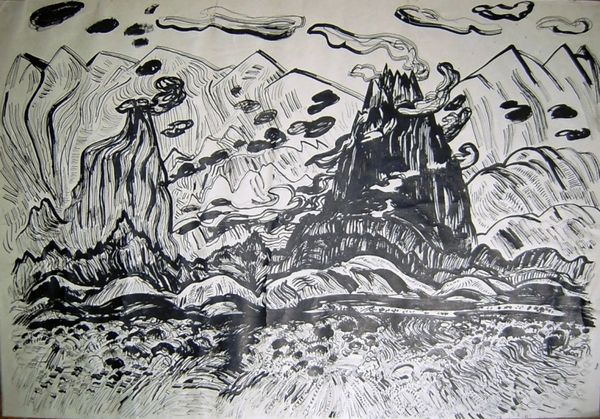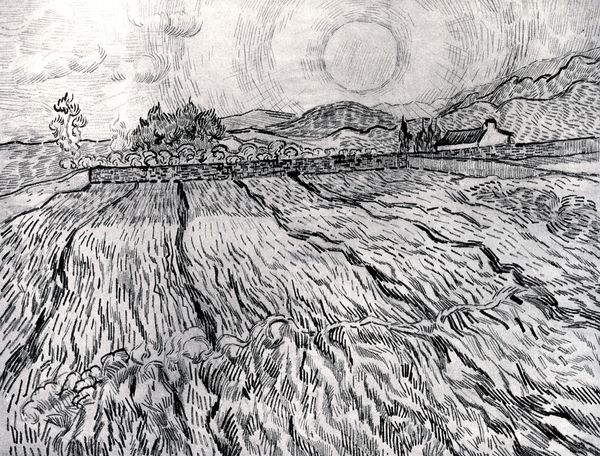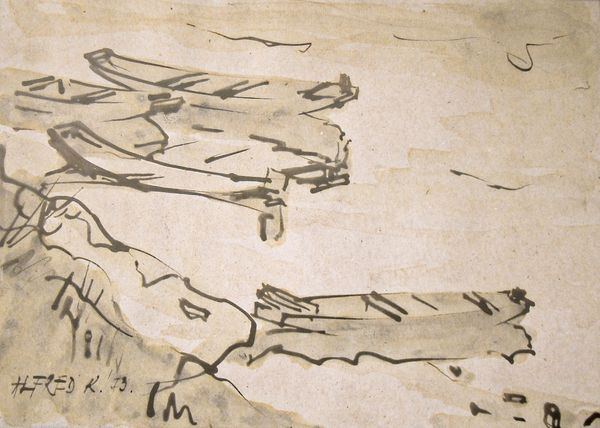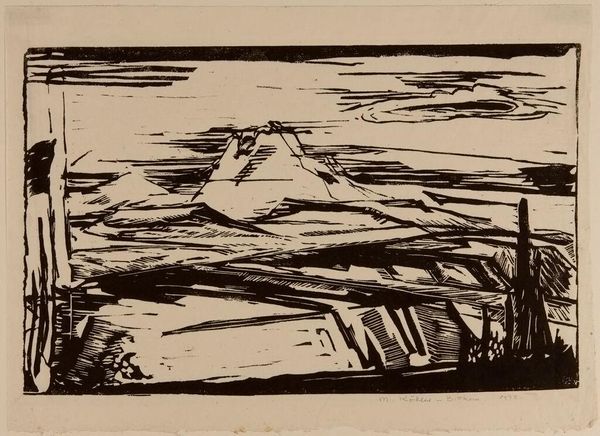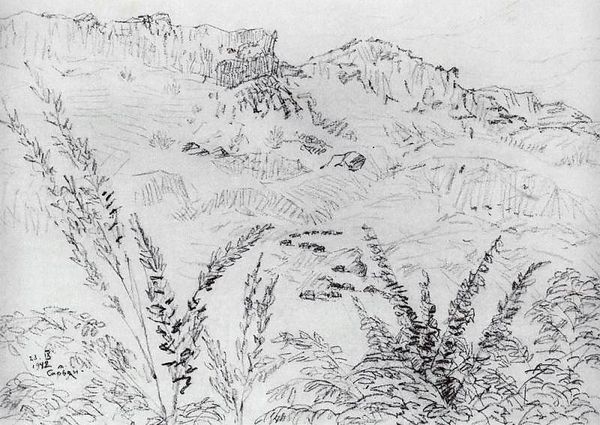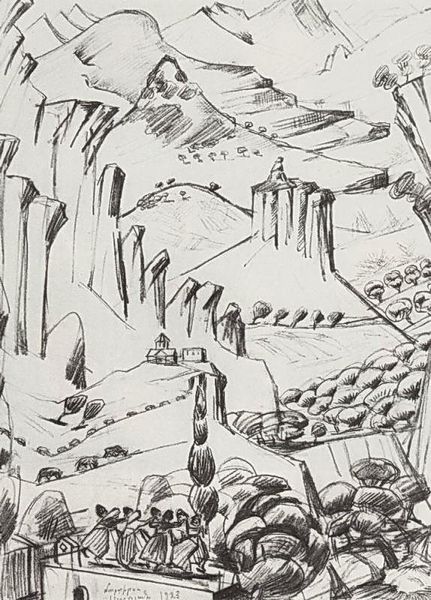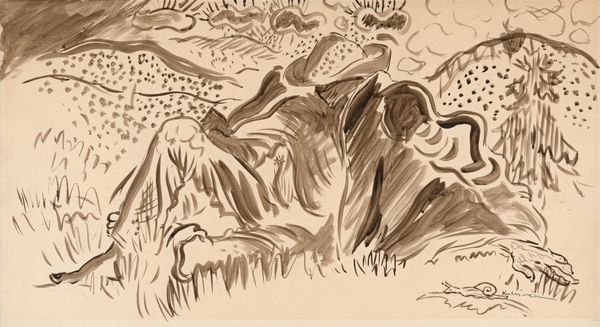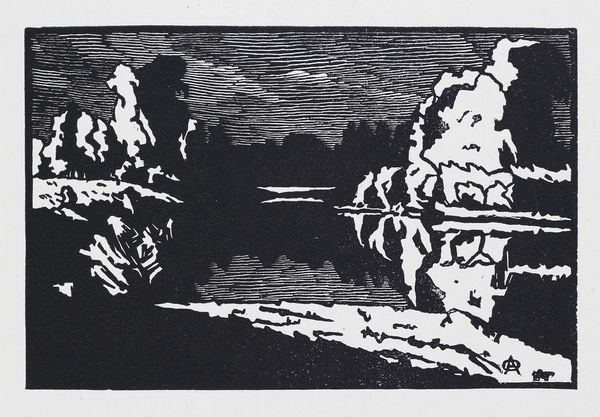
drawing, ink
#
drawing
#
pen sketch
#
landscape
#
ink line art
#
ink
#
geometric
#
sketch
#
modernism
Dimensions: 70 x 100 cm
Copyright: Sattar Bahlulzade,Fair Use
Editor: We're looking at Sattar Bahlulzade's "Mountains and Clouds," made in 1964 using ink. The striking contrast between the black ink and white space makes it appear both dramatic and somehow unfinished. What do you see in this piece, from your perspective? Curator: I see a landscape wrestling with memory. Bahlulzade’s lines are almost violently evocative, digging into the paper much like a memory carves into the psyche. Notice the swirling clouds—they're not just meteorological phenomena; they seem to be obscuring, perhaps hinting at the transient nature of experience. Editor: So the clouds are not just clouds, but rather symbolic? What might they symbolize in this context? Curator: Precisely. Clouds often symbolize impermanence, transition, and even the obscurity of the future. The mountains themselves, typically symbols of steadfastness, appear fragmented. This fragmentation makes me wonder about the cultural or personal landscape Bahlulzade was navigating at the time. Are these mountains remembered, dreamed, or perhaps even feared? Editor: That's a compelling point. The fragmented nature disrupts the conventional understanding of mountains as stable features. Curator: Indeed. What at first glance appears to be a simple landscape sketch becomes a complex psychological terrain. The recurring geometric patterns might signify attempts to structure the chaotic nature of memory itself. How do you interpret the density of the linework in the foreground compared to the mountains? Editor: It feels like a barrier, or a filter, altering how we perceive what’s beyond. Almost like the memory itself is layered. Curator: Exactly! A brilliant observation. This layered approach could illustrate how time and emotional experience alter our perception of reality and memory, something universally relatable. Editor: I never would have thought of this drawing as so much more than a simple landscape! Thanks for opening my eyes to the possibilities in it. Curator: My pleasure! Hopefully, this has offered a deeper appreciation for how visual symbols can embody complex emotional and cultural meanings across time.
Comments
No comments
Be the first to comment and join the conversation on the ultimate creative platform.
